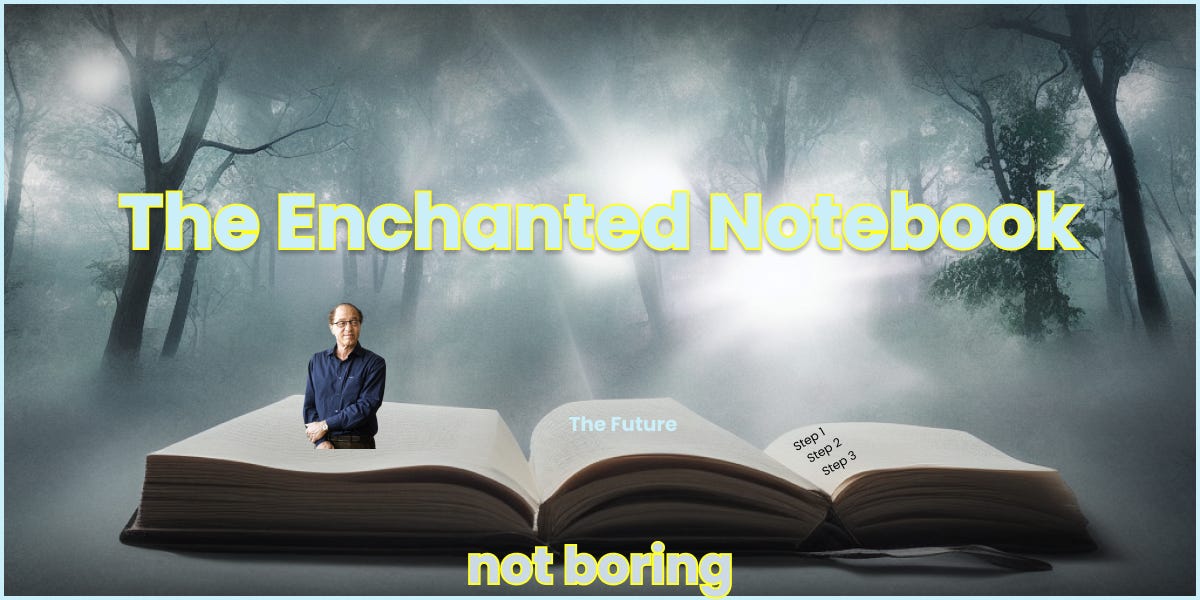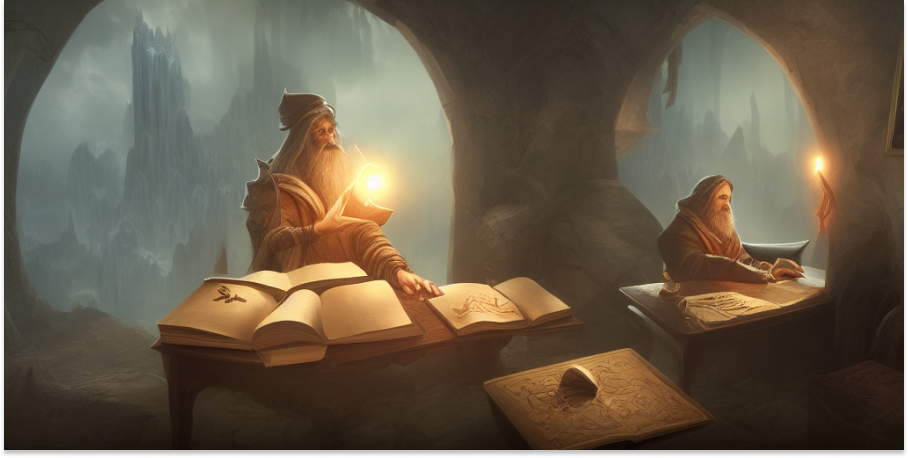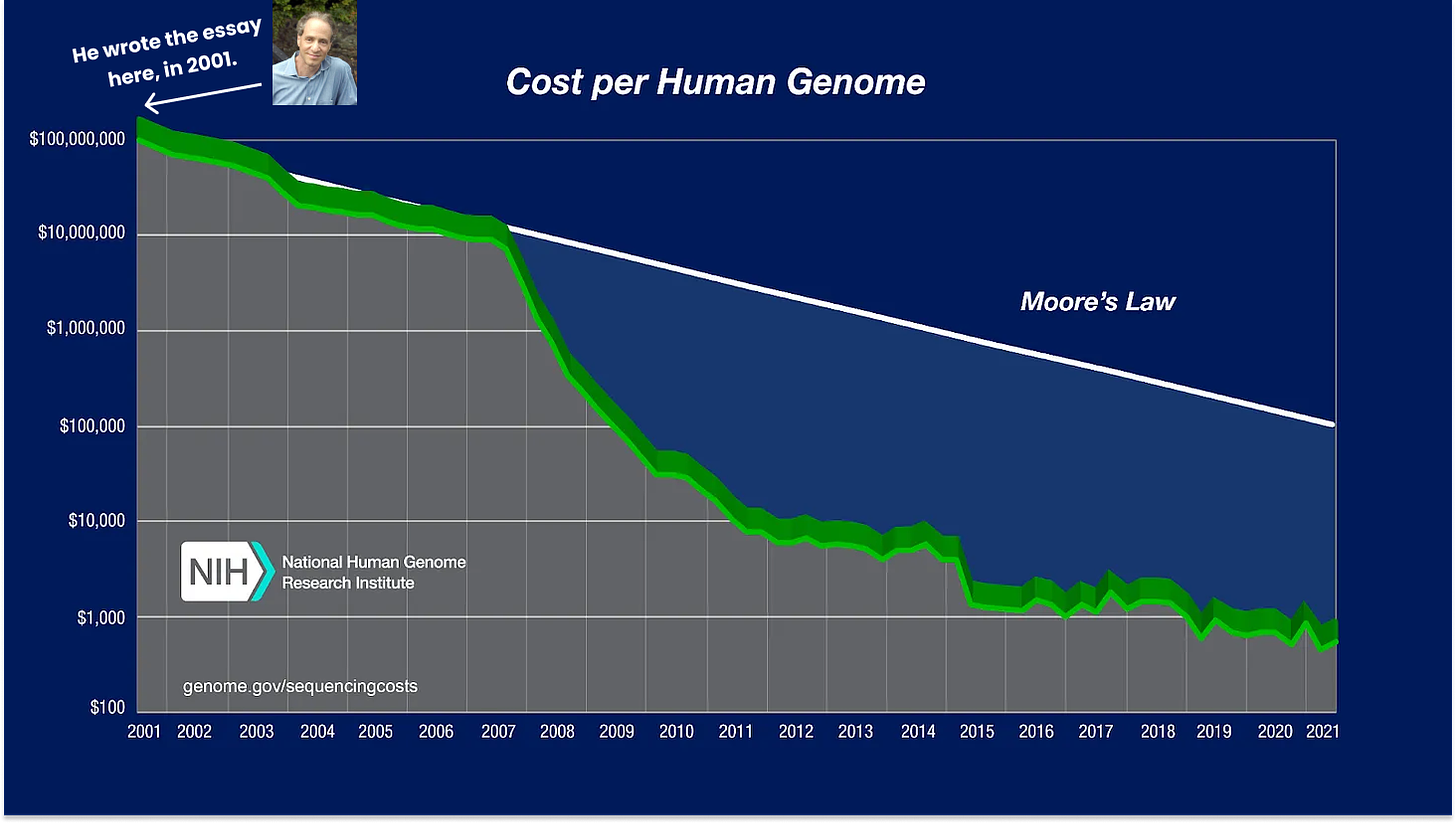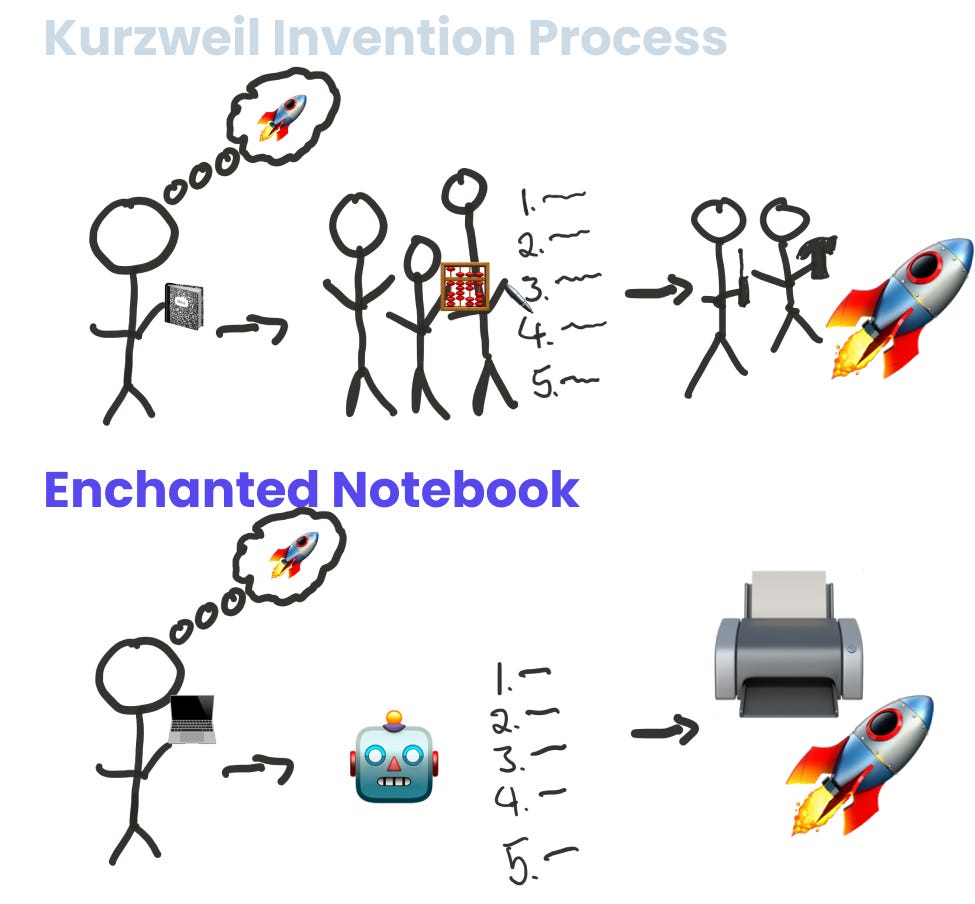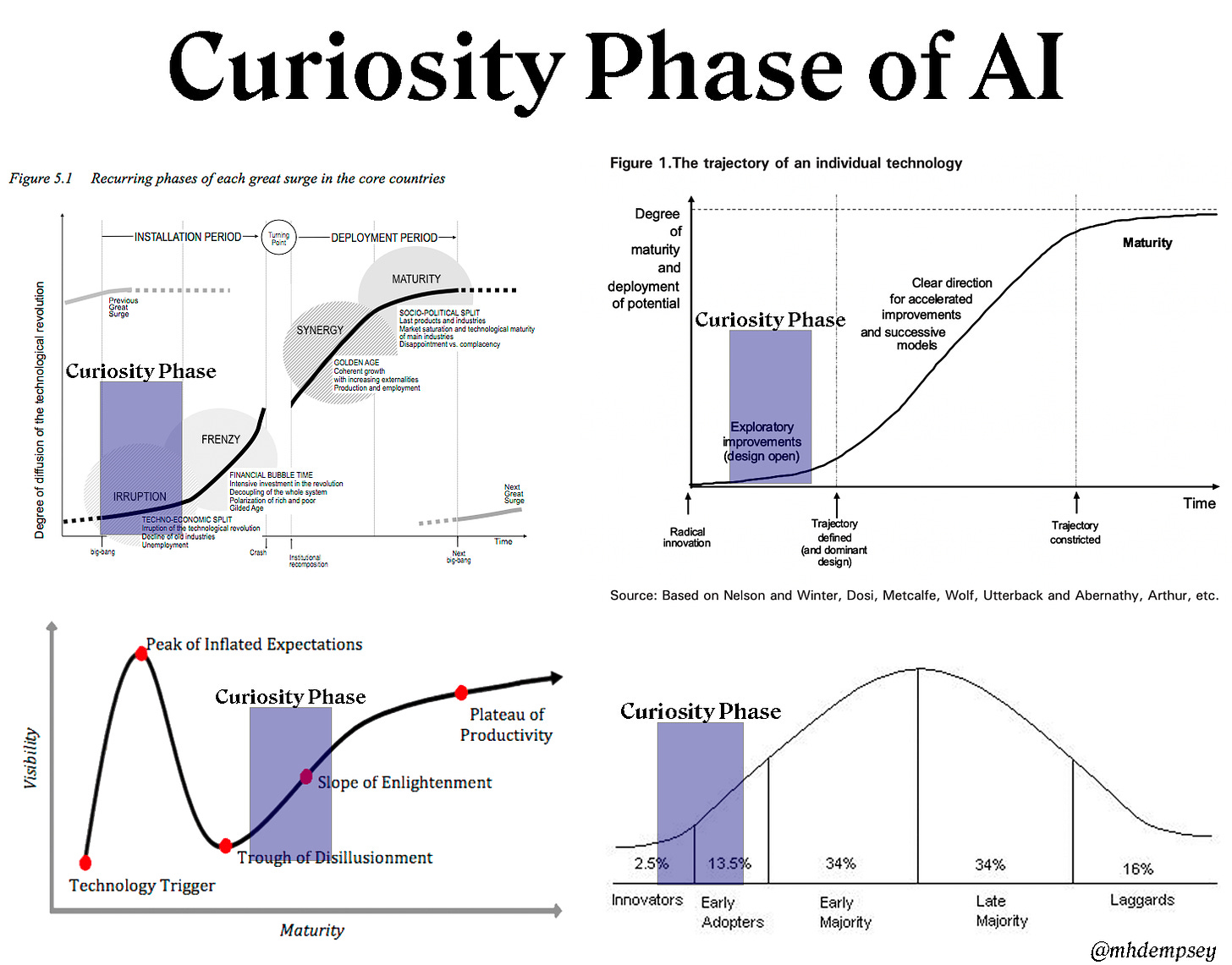

The Enchanted Notebook
source link: https://www.notboring.co/p/the-enchanted-notebook
Go to the source link to view the article. You can view the picture content, updated content and better typesetting reading experience. If the link is broken, please click the button below to view the snapshot at that time.

The Enchanted Notebook
Or, How to write the future into existence
Welcome to the 1,184 newly Not Boring people who have joined us since last Monday — I need to take breaks more often! If you haven’t subscribed, join 154,543 smart, curious folks by subscribing here:
🎧 To get the essay right in your ears, listen on Spotify or Apple Podcasts
Today’s Not Boring is brought to you by… Secureframe
Secureframe is the leading, all-in-one platform for security and privacy compliance. Secureframe makes it fast and easy to get and stay compliant so you can focus on what matters: Scaling your business, customers, and revenue.
With Secureframe, hypergrowth organizations can:
Get SOC 2 audit ready in weeks, not months
Stay compliant with the latest regulations
Scale compliance with your business to meet ISO 27001, GDPR, HIPAA, PCI, and other requirements
Plus, Secureframe helps sales teams respond to RFPs and security questionnaires quickly and easily with AI so they can close more deals, faster.
Click here to set up a demo. Mention “Not Boring” during your demo to get 20% off your first year of Secureframe. Promotion available through October 31, 2022.
Hi friends 👋,
Happy Monday! This is my shortest piece in a long time — it all fits in the email — on a topic that’s near and dear to my heart: the real and growing power of writing down the future you want to see exist.
Let’s get to it.
The Enchanted Notebook
Imagine that, sitting at your desk on a normal Monday, a Monday just like today, a wizard pops into your office and hands you an enchanted notebook.
“Write any idea in this notebook,” the wizard whispers, “and it will show you how to make it real.”
The notebook is fantasy, but one very real way to create the future is to imagine what it looks like, write it down, and then work backwards.
On Thursday, I was walking through Soho and life was good. I’d just grabbed coffee with one of my favorite entrepreneurs, the sun was shining after a morning shower, I had a box full of Little Cupcake Bakeshop cupcakes for Dev in hand, and I was listening to Lex Fridman interview Ray Kurzweil.
Kurzweil wrote one of the first books that got me really interested in technology, The Singularity is Near. Way back in 2005, my friend Nick, the same one who listened to Spotify on the party bus with me, told me I had to read it. And he was right. It blew my mind open.
The whole interview was fascinating – Kurzweil’s brand of hyper-optimistic futurism is catnip to me. His superpower is believing harder than anyone else in the power of exponential curves.
His 2001 essay, The Law of Accelerating Returns, is worth a read both for the ideas themselves and for how well many of his 21-year-old predictions have held up. In it, for example, he calls the timing of the paradigm shift in computing’s exponential growth (the shift from CPUs to GPUs, from Moore’s Law to Huang’s Law) in the 2010s, and the precipitous declines in the cost of human genome sequencing.
Those ideas, and the idea of the Singularity, were so ahead of their time and out there that they’ve invited criticism from a host of Very Smart People. On the one side are experts, who understand the day-to-day difficulties of actually making Kurzweil’s predictions come true; on the other is Kurzweil, who looks at the curves and trusts that they’ll continue.
Time will tell which side is right, and he’s missed on some predictions in the interim. But in the conversation with Fridman, Kurzweil makes a compelling argument that the consensus view on the timeline for artificial intelligence is coming back around to the timeline that he put forth in 1999, and has held to since: pass the Turing Test in 2029, Singularity in 2045. If Kurzweil is right, or even close to right, he may go down as the person with the greatest ability to predict the future in human history.
So when Fridman asked Kurzweil about how he comes up with his ideas, I stopped walking, paused, rewound, and focused.
Here’s the video, starting at the relevant point:
I transcribed the key part here:
Fridman: You’ve talked about how you use lucid dreaming to think, to come up with ideas as a source of creativity. Can you maybe talk through that? You’ve invented a lot of things. You’ve come up with and thought through some very interesting ideas. What advice would you give, or can you speak to the process of thinking, how to think creatively?
Kurzweil: Sometimes I will think through in a dream and try to interpret that, but I think the key issue that I would tell younger people is to put yourself in the position that what you’re trying to create already exists. And then you’re explaining…
Fridman: …how it works?
Kurzweil: Exactly.
Fridman: That’s really interesting. You paint a world that you would like to exist, you think can exist, and reverse engineer that.
Kurzweil: And then you actually imagine you’re giving a speech about how you created this. Well you’d have to then work backwards about how you created it to make it work.
Fridman: That’s brilliant, and that requires some imagination, too, some first principles thinking. You need to visualize that world. That’s really interesting.
Kurzweil: And generally when I talk about things that we’re trying to invent, I would use the present tense as if it already exists. Not just to give myself that confidence, but everybody else that’s working on it. We just have to do all of the steps to make it actual.
The way Kurzweil describes it, innovation is half storytelling. It’s our Enchanted Notebook, just with humans filling in the enchanted bits for now.
Write a speech, or a story, about the thing you want to create or the future world you want to inhabit. Paint that world in detail so rich, using the present tense, that it feels like you already live there. Imagine the magical technology that has become so ordinary that people just use it every day without a second thought. How do people behave in this world? What’s changed about them? What’s stayed the same?
Then, reverse engineer it. What components go into that technology? When will which pieces be technically feasible? What machines need to exist to manufacture the technology? Where did you need to work with regulators to make sure people were allowed to use it? What will the unit economics look like? Which cost curves had to keep falling exponentially for those unit economics to make sense? How did they improve with scale, and which distribution channels did you use to sell the product?
Kurzweil’s process is reminiscent of Amazon’s Future Press Release. When teams at Amazon proposed a new product, Jeff Bezos made them write a press release from the perspective of specific time in the future at which the product has been released and goals have been accomplished. Former Amazon exec John Rossman laid out the four rules for future press releases:
Rule 1. The goal must be stated at a future point in time at which success has been achieved and realized.
Rule 2. Start with the customer.
Rule 3. Set an audacious and clear goal.
Rule 4. Outline the principles used that led to success.
In either case, Amazonian or Kurzweilian, the process of bringing a new thing to life requires a combination of dreams and details, in three parts:
Imagine a future world and write it down.
Fill in all of the details with as much technical and research-based support as possible.
Execute on those details to make the thing real.
When I heard Kurzweil describe his process, I went through three emotional states:
Excitement: Writing! That’s what I do!
Depression: Oh… I’m not technical. I wouldn’t know how to reverse engineer something.
Wonder: Wait… how long is reverse engineering going to require actual engineering knowledge?
I wonder how far off we are from the Enchanted Notebook: the point at which technology eliminates, or dramatically shrinks, the gap between imagination and reverse engineering. And from there, how much further we are from the point at which technology eliminates, or dramatically shrinks, the gap between reverse engineering and execution.
One way to think about the Singularity is the point at which human-computer combinations do all three steps, pretty much in real-time, and carry out the execution with nanobots or something. But far before that point, it seems like we should be able to dream up those products, write them down, and let AI do the reverse engineering.
Last week, Replit CEO Amjad Masad tweeted something to that effect:
Caveats abound. Replit’s GhostWriter is still in beta and only helps humans write code. It can’t turn problem into product on its own yet, and that seems like a big bridge to cross. Plus, software engineering is likely an easier problem for AI to solve from a text input than mechanical engineering, if only because the amount of public code available to learn on is much larger than the amount of public CADs available, especially for sufficiently advanced designs, and is likely easier for AI to make sense of. And AI-assisted coding isn’t solving the kind of novel problems that AI-assisted physical product innovation would need to solve to be really magical. And and, there are likely a thousand things that I’m not thinking of here that make this harder than it seems to a non-technical, optimistically-minded person like me.
BUT it seems almost certain that we’ll reach a point in the coming decades at which I’ll be able to write, “Single-person spacecraft capable of launching 500 pounds into orbit and sustaining life for up to six months” or whatever and get back a reverse-engineered CAD file, instruction set, and materials list with prices and suppliers. If the idea isn’t feasible yet, it might return a list of bottlenecks with best-guesses for when they’ll be solved, and all of those bottleneck lists might serve as a smorgasbord for researchers and entrepreneurs looking for big problems to solve.
All of this seems infeasible and outlandish in the present. This current wave of AI innovation is creating a hype cycle, as every exciting technology does, and the reality likely won’t live up to the hype for a little while:
Michael Dempsey thinks we’re in the Curiosity Phase, past the Peak of Inflated Expectations and Trough of Disillusionment, exciting enough to lure people in while still being a really difficult spot in which to build an AI-powered company.
But let me dream for a minute. It is moving really fast.
Last Monday, I wrote “We’re one small leap – some enterprising young coder hooking Stable Diffusion up to a voice input – from being able to speak words to conjure magic, incantation brought to reality.”
On Wednesday, two days later, OpenAI released and open sourced Whisper, which will make it easier to make incantation real.
Friday morning, I spent time manually transcribing that Lex Fridman - Ray Kurzweil exchange.
Friday afternoon, @jeffistyping dropped Youtube Whisperer, which uses Whisper to create transcripts from YouTube videos with Hugging Face.
I know that I didn’t write those things into reality, but it certainly felt like it.
Kurzweil has an explanation for the hype cycle, too. In The Law of Accelerating Returns, he pointed out that exponential curves feel linear and flattish in the moment, until they don’t:
Most technology forecasts ignore altogether this “historical exponential view” of technological progress. That is why people tend to overestimate what can be achieved in the short term (because we tend to leave out necessary details), but underestimate what can be achieved in the long term (because the exponential growth is ignored).
Another way to view the Singularity is the point at which the short-term/long-term mismatch disappears, because the gap between idea and execution disappears.
Whether the Singularity is near or not, it seems useful to try to shrink the mismatch by dreaming big about the future but making sure to fill in the necessary details. Very few people are great storytellers and great engineers, but AI might be able to help each side get better at the other.
Engineers can run the details through GPT-3 and get a story.
Storytellers can write the story into RevEng-4 (or whatever OpenAI calls it) and get the reverse-engineered details.
Dreams and reality will move ever closer to each other.
Whether that future is two months, two years, or two decades away, or whether it never comes, a good proximate next step on any timeline is for more people to paint rich, detailed visions of the future that they want to see come true.
Imagination isn’t sufficient for creating the future, for now, but it is necessary.
Thanks to Dan and Puja for editing, and to Secureframe for supporting Not Boring!
We’ll be back to you on Thursday with a Deep Dive on one of the most sneaky successful startups out there. Until then, have a great week!
Thanks for reading,
Packy
Recommend
About Joyk
Aggregate valuable and interesting links.
Joyk means Joy of geeK

